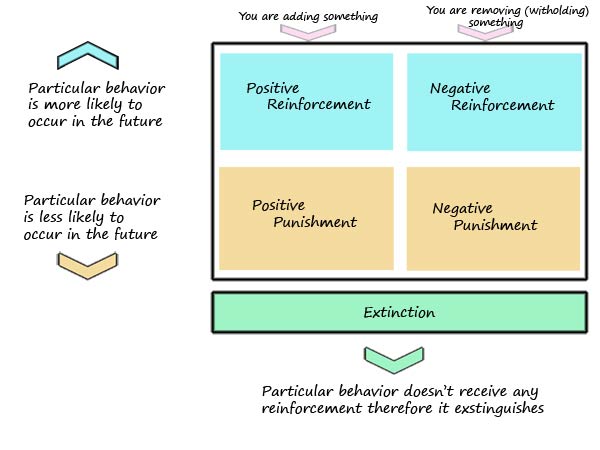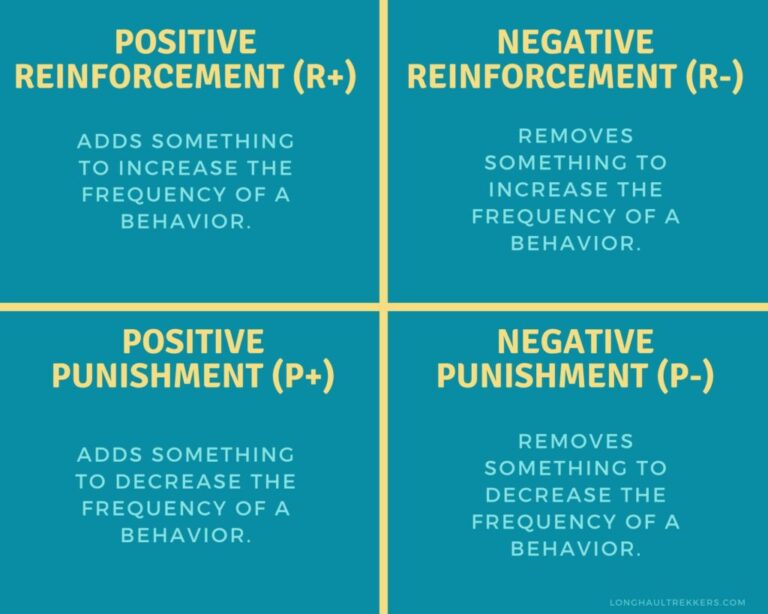Pros and Cons: Physical Punishment in Dog Training
Last Updated on March 29, 2024 by Jan N. Dillon
Physical punishment in dog training can lead to distrust and hostility towards their owners, causing damage to the bond between them. Physical discipline is illegal in some states and countries.
Despite being a widely discussed topic, the effectiveness of physical punishment in dog training remains a controversial debate. While some owners strongly advocate for this disciplinary technique, claiming that it is the most effective way to correct misbehavior, others argue that it creates a negative impact on the dog’s psyche, leading to long-lasting effects and potential aggression.
This article will provide an in-depth analysis of the pros and cons of physical punishment in dog training and explore alternative techniques for effective training.
Table of Contents
- 1 Negative Effects Of Physical Punishment
- 2 Examples Of Negative Punishment In Dog Training
- 3 Alternatives To Physical Punishment
- 4 Beneficial Cases For Punishment-based Training
- 5 Drawbacks Of Punishment-based Training
- 6 Debate Over Punishment In Dog Training
- 7 Frequently Asked Questions On Pros And Cons Of Physical Punishment In Dog Training
- 8 Conclusion
Negative Effects Of Physical Punishment
Physical punishment can have negative effects on dogs, including causing fear, hostility and a breakdown of the bond between pet and owner. Additionally, such discipline may be illegal in some areas. It is important to consider using constructive techniques, like removal, time-outs, ignoring behavior and positive reinforcement training, to avoid these issues.
Negative Effects of Physical Punishment:Distrust And Hostility
Physical punishment can make your dog associate you with pain and fear, leading to distrust and hostility towards you. Your dog might begin to see you as the source of harm, resulting in a lack of trust and fearful behavior towards you. This can cause your dog to become unresponsive, uncooperative and withdrawn, leading to further frustration and anger. Physical punishment can also result in your dog responding aggressively and defensively, making it difficult to create a positive and healthy relationship with your furry friend.Damage To The Bond
Physical punishment can damage the bond between you and your dog. Such damage can take a long time to heal, and in some cases, it may never recover. Your dog might begin to view you as an abusive and dangerous figure, leading to anxiety, fear, and avoidance. Additionally, physical punishment can misinform your dog about your expectations and inhibit your dog’s ability to learn. Ultimately, this can lead to an ineffective training experience and cause further frustration between you and your furry friend.Legal Implications
Lastly, physical punishment is illegal in some states and countries. If you continue to use such punishment, legal action can be taken against you, and you may face severe consequences. The use of physical punishment can also negatively impact your dog’s welfare, causing physical and emotional distress. Therefore, it is essential to seek out positive reinforcement techniques, which are both safe and effective. These techniques promote a positive and healthy working relationship between you and your furry friend while maintaining their well-being.In conclusion, physical punishment can have negative effects on your furry friend, and it is essential to avoid such techniques. You can create a healthy, respectful, and safe relationship with your furry friend through positive reinforcement techniques, which promote trust, mutual respect, and effective communication. So, as a responsible dog owner, it is crucial to consider the well-being of your furry friend before choosing which training method to employ.Examples Of Negative Punishment In Dog Training
Using physical punishment in dog training, such as hitting or yelling at a dog, can damage the relationship between the owner and the dog, leading to distrust and fear. Negative punishment, however, involves taking away a desired stimulus after undesired behavior to decrease the likelihood of the behavior happening again in the future.
Other constructive disciplinary techniques include time-outs and ignoring negative behavior. Nonetheless, the disadvantages of punishment-based training outweigh the advantages.
Examples of Negative Punishment in Dog TrainingNegative punishment is a form of disciplinary action that involves the removal of desired stimuli to reduce the likelihood of a specific behavior being repeated. While it is essential to note that dog training is essential to creating a well-behaved dog. There’s an ongoing debate among dog owners and trainers about the effectiveness and ethicality of physical punishment. Negative punishment is one of the techniques used in dog training, which is considered less harmful than positive punishment methods. Let’s dive deeper and explore some examples of negative punishment in dog training.H3: Removing Desired StimulusThe most common example of negative punishment is removing a desired stimulus, which the dog considers as a reward. For instance, if your dog jumps on guests, you may instruct your guests to turn away and ignore him whenever he jumps on them. By doing this, you are removing the affection and attention your dog seeks, thereby discouraging this behavior.There are several effective ways to remove desired stimulus as a form of negative punishment. Such methods include limiting access to toys or games, turning away, and refraining from eye contact. These techniques can help discourage your dog from engaging in negative behavior.H3: Time OutsTime-outs or solitary confinement are another way of negative punishment. This method involves withdrawing your dog suddenly and without warning from an activity they enjoy, like playing with their toys or going for a walk. Timing is crucial in implementing this method. Ensure that once you withdraw your dog from the activity, you give them time to calm down before allowing them to continue.H3: Ignoring and Interrupting Negative BehaviorThis form of negative punishment entails ignoring or interrupting the unwanted behavior, thereby removing the reinforcement that the dog seeks. For instance, if your dog starts barking excessively, do not give them attention or yell back at them. Instead, ignore the behavior. Alternatively, you can interrupt the behavior by clapping your hands or making any loud noise that will distract and stop them from continuing the negative behavior.In conclusion, while negative punishment is considered a less harmful form of discipline in dog training, remember that it should be used sparingly and appropriately. Physical punishment, on the other hand, can instill fear and cause lasting damage to your dog’s relationship with you. By following the positive reinforcement and negative punishment techniques, you can create a well-disciplined, happy, and healthy dog.Alternatives To Physical Punishment
There are many alternatives to physical punishment in dog training, which have their own pros and cons. Physical punishment can damage the bond between you and your dog and even lead to long-term distrust and hostility, while alternative techniques such as time outs, removal of rewards and positive reinforcement can be effective in teaching good behavior without causing harm or fear.
It is also important to note that physical punishment is illegal in some states and countries.
Alternatives to Physical PunishmentPhysical punishment in dog training can have detrimental effects on the bond between you and your dog, and in some cases, it can be illegal. So, it’s important to explore alternative disciplinary techniques. Here are two alternative techniques that can be effective in dog training.Constructive Disciplinary Techniques
Constructive disciplinary techniques are those that are designed to restrain unwanted behavior without inflicting any pain or discomfort. These techniques are more effective because they help your dog understand the consequences of their actions, without causing any fear or anxiety.Some examples of constructive disciplinary techniques include:- Taking something of value away
- Interrupting negative behavior with a vocal interrupter
- Ignoring behavior
- Time outs
- Removal
Positive Reinforcement Training
Positive reinforcement training is a disciplinary technique that is designed to reward your dog for good behavior. Whenever your dog exhibits a behavior that you want to encourage, you should reward them generously with treats, toys or praise.This technique is effective because it helps your dog understand what behavior is expected of them. And when they receive positive feedback, they are more likely to repeat that behavior.In summary, physical punishment can be harmful to your dog’s well-being and your relationship with them. Using constructive disciplinary techniques or positive reinforcement training can be more effective in training your dog and nurturing a positive relationship.
Credit: pethelpful.com
Beneficial Cases For Punishment-based Training
While physical punishment is not recommended in dog training due to potential negative effects, there are some beneficial cases where it can be used as a supplement to positive reinforcement training. However, it is important to ensure that the training is humane and does not cause undue harm or damage the bond between the dog and owner.
Beneficial Cases for Punishment-Based TrainingWhile positive reinforcement is widely regarded as the best mode of training for dogs, there are certain situations where punishment can be considered beneficial. Here are some scenarios where punishment-based training may be utilized:Supplementing Positive Reinforcement Training
In cases where the positive reinforcement method fails to bring the desired results, punishment can be used to deter unwanted behaviors. For example, if a dog continues to engage in dangerous behavior despite positive reinforcement training, a mild form of punishment may be necessary to reinforce acceptable behavior.Afraid Of Immediate Danger
There are times when dogs are placed in immediate danger and the only way they can be saved is by punishing them. For instance, if a dog tries to run into a busy street, a loud and punitive admonition can help prevent an accident.Stopping Aggressive Behavior
Punishment can also be incredibly useful in stopping aggressive behavior, such as biting, growling, and barking excessively. In situations where these behaviors pose a threat to other dogs or humans, swift and controlled punishment can be effective in curbing this behavior.Effective Training Methods To Use With Disobedient Dogs
When training disobedient dogs, a combination of positive reinforcement and punishment can be a proven and effective method. This system offers pets plenty of opportunities to learn obedience, and when the positive reinforcement method fails, mild to moderate punishment can be utilized to provide structure and control.Proven Control Over Your Dog’s Behavior
One of the greatest benefits of punishment-based training is the level of control and obedience it can instill in a dog. Using punishment to enforce a correct reaction or response from the animal can translate into long-term obedience and control in all situations.While punishment-based training can be useful in certain scenarios, it often leads to an unhealthy relationship between the pet and its owner if used improperly. It is essential to understand that punishment-based training should only be used in rare and specific cases, and always with care and caution.Drawbacks Of Punishment-based Training
Physical punishment is not recommended in dog training as it can damage the trust and bond between a dog and its owner, and may lead to increased aggression and fear. Additionally, using physical discipline is illegal in some states and countries.
It’s best to opt for humane and constructive disciplinary techniques.
When it comes to dog training, there are various approaches that one can take, including punishment-based training. However, this method is not without its drawbacks. In this section, we will explore the negative impact that punishment-based training can have on dogs, with a focus on two main drawbacks: the necessity for aversive training methods and the negative psychological impact on the dog.Necessitates Aversive Training Methods
With punishment-based training, the focus is often on correcting undesirable behaviors through the use of aversives, such as physical force or pain. This can include leash jerks, electric collars, or physical reprimands like hitting or slapping. While it may seem like an effective way to modify behavior, it comes with inherent risks. Firstly, the use of aversives can cause unintended harm, especially in the hands of inexperienced trainers. Secondly, it can create an environment of fear and stress, which can lead to defensive or aggressive behavior in the dog.Negative Psychological Impact On Dog
Moreover, punishment-based training can have serious negative psychological effects on the dog. When a dog is punished for an undesirable behavior, it may result in anxiety, stress, and fear. Over time, this can damage the bond between the dog and the owner, leading to distrust and a breakdown in communication. Additionally, the use of punishment does not address the root cause of the behavior, but rather suppresses the behavior for fear of punishment. As a result, it is often not a long-term solution and may lead to the development of new, unwanted behaviors.Instead, positive reinforcement, where desirable behaviors are rewarded, is often a more effective training method that avoids causing harm or fear in the dog. By reinforcing good behavior, dogs learn to associate certain actions with positive outcomes, and their trust and bond with their owners can grow stronger.In conclusion, while punishment-based training may seem like a quick fix for undesirable behavior in dogs, it comes with significant drawbacks. Not only is it potentially harmful, but it can also damage the bond between owner and pet, and may not provide a long-term solution to the problem at hand. By using non-aversive methods like positive reinforcement, owners can train their dogs effectively while building trust and strengthening their relationship.
Credit: www.koinoniadogs.com
Debate Over Punishment In Dog Training
When it comes to training dogs, there is a debate over the use of physical punishment. Some dog owners and trainers believe that physical punishment is an effective tool for correcting unwanted behavior while others argue that it can cause more harm than good. In this article, we’ll explore both sides of this debate by discussing the pros and cons of physical punishment in dog training.
Studies And Research On Physical Punishment
There have been numerous studies conducted on the effects of physical punishment on dogs. Research has shown that physical punishment can elicit aggression in dogs, which can lead to more undesirable behavior. For instance, when a dog is physically punished, it may develop fear and anxiety towards its owner and other people, thereby making it difficult to form positive relationships.
Another study has shown that dogs trained using reward-based methods are twice as likely to obey their owners’ commands than those trained using physical punishment. Reward-based training focuses on positive reinforcement rather than punishment and has been proven to be more effective in the long run.
Personal Experiences And Opinions
Many dog owners and trainers have had personal experiences with both reward-based training and punishment-based training. Some argue that physical punishment is necessary for certain breeds or for dogs with aggressive behavior. They believe that physical punishment is the best way to stop their dogs from misbehaving.
However, others argue that physical punishment is not only ineffective but also harmful. They believe that it damages the relationship between the owner and the dog and can result in long-term behavioral issues. Instead, they advocate for a more positive approach to training that involves rewards for good behavior rather than punishments for bad behavior.
In conclusion, while physical punishment may seem like a quick fix for bad behavior, it can have long-lasting negative effects on a dog’s behavior and mental health. It’s important for owners and trainers to consider the long-term consequences of their training methods and choose a more positive approach when possible.

Credit: www.puppyinstitute.com
Frequently Asked Questions On Pros And Cons Of Physical Punishment In Dog Training
Is Physical Punishment Bad For Dogs?
Using physical punishment on dogs is bad because it can cause your dog to associate pain and fear with you, leading to distrust and hostility in the long run. Additionally, physical discipline is illegal in some states and countries. It’s better to use humane and constructive disciplinary techniques such as time-outs, taking away something of value, and interrupting negative behavior with a vocal interrupter.
Overall, the disadvantages of using punishment greatly outweigh the advantages.
Why Not To Use Punishment In Dog Training?
Physical punishment should not be used in dog training because it can damage the bond between you and your dog, leading to fear and distrust. Moreover, punishment can cause unpredictable and intense aggression in dogs. It is also illegal in some states and countries.
Positive reinforcement and humane disciplinary techniques are more effective for dog training.
What Is An Example Of Negative Punishment In Dog Training?
An example of negative punishment in dog training is when you stop giving your dog attention or take away a reward after they display undesired behavior. For instance, if your dog pulls on the leash during a walk, you stop walking until they stop pulling.
It is essential to avoid physical punishment in dog training as it can lead to fear, pain, and hostility towards you. Moreover, it may damage the bond you share with your dog and is even illegal in some states and countries.
What Is The Most Effective Punishment For Dogs?
The most effective punishment for dogs is constructive discipline, which includes removal, time outs, taking away something valuable, ignoring undesired behavior, and interrupting negative behavior using a vocal interrupter. Physical punishment can damage the trust and bond between you and your dog and may lead to fear and aggression.
Punitive discipline is illegal in some states and countries.
Conclusion
Physical punishment in dog training can have detrimental effects on the bond between the dog and the owner. It can lead to fear, aggression, and in some cases, make the behavior worse. Additionally, in many states and countries, physical discipline is illegal.
Instead, constructive disciplinary techniques such as timeout, taking something of value away, using vocal interrupters, and ignoring negative behavior can be more effective and long-lasting. It is important to prioritize the well-being and trust between the dog and the owner with positive reinforcement training methods.






